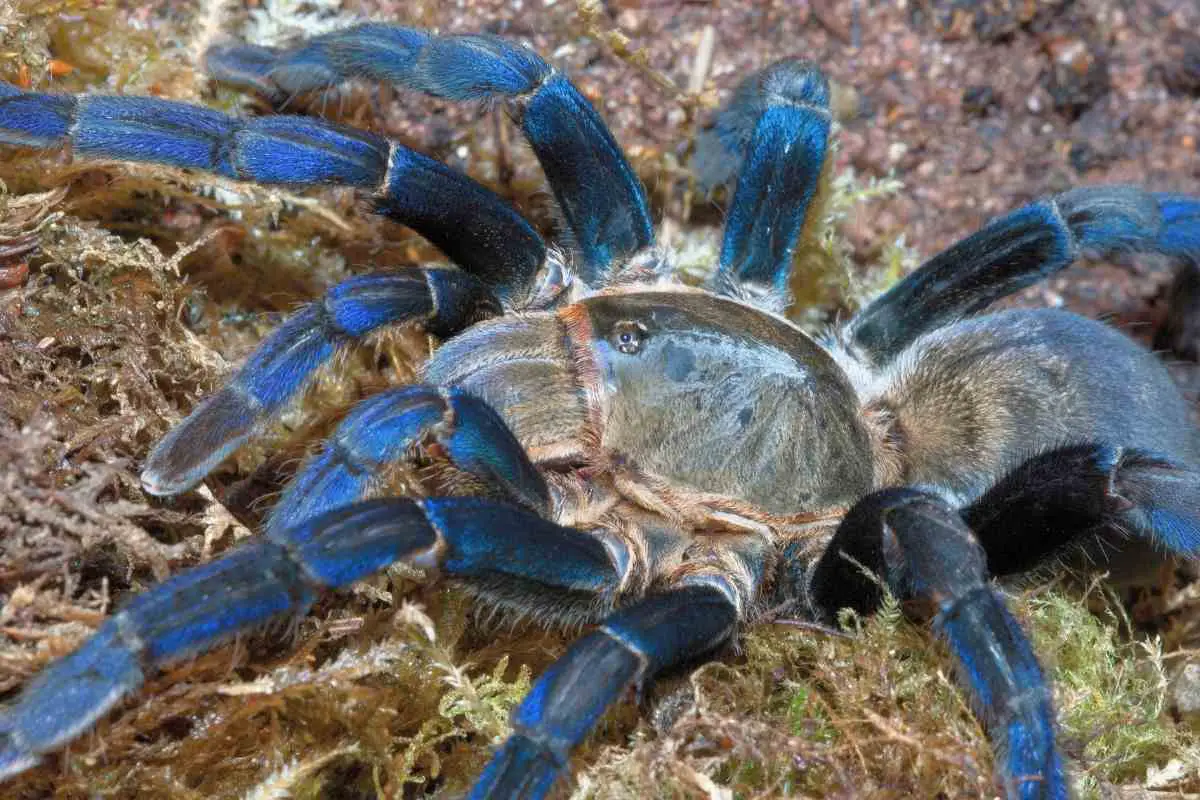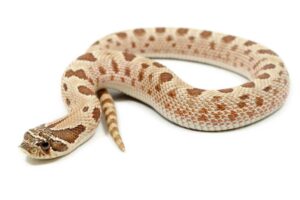Are you considering adding a cobalt blue tarantula to your family? If so, you’ll want to read this pet guide first.
In This Article – We will provide you with all the information you need to care for your new pet, from feeding and housing requirements to health and safety concerns.
So whether you’re a first-time spider owner or just looking for more information on cobalt blue tarantulas, keep reading for everything you need to know.
Table of Contents
Cobalt Blue Tarantula Background
The Cobalt Blue Tarantula is a spider that is native to Myanmar and over the border into Thailand. It was discovered in 20014 by Andrew Snyder.
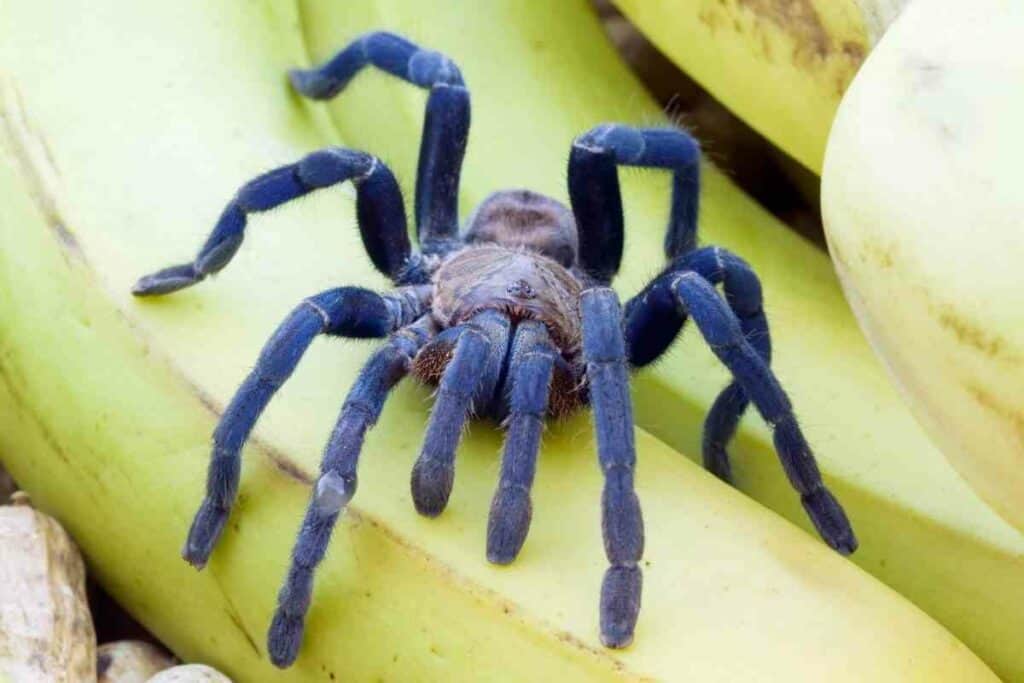
The blue tarantula gets its name from the iridescent blue coloration on its carapace, or top part of the body. The brilliant blue hue is created by light reflecting off of microscopic scales on the spider’s exoskeleton.
As With All Tarantulas – The Cobalt Blue Tarantula is a burrowing spider and prefers to live in dark, moist environments. It can be found in tropical forests and rainforests at elevations up to 4000 feet. The cobalt blue tarantula is also known to build burrows in the soil, where it will shelter during the day.
Cobalt blue tarantulas are considered to be docile spiders and make good pets for beginner spider owners.
They are relatively easy to care for and do not require a lot of maintenance. However, there are a few things you need to keep in mind when caring for your new pet.
Cobalt Blue Tarantula Size
The cobalt blue tarantula is a medium-sized spider with females reaching a leg span of around 5 inches. The males are somewhat smaller.
Both males and females appear fairly similar until maturity when the males develop a light grey color.
Females live about 15 years on average, whereas males can survive up to 10 years, which is still quite a long time for a tarantula.
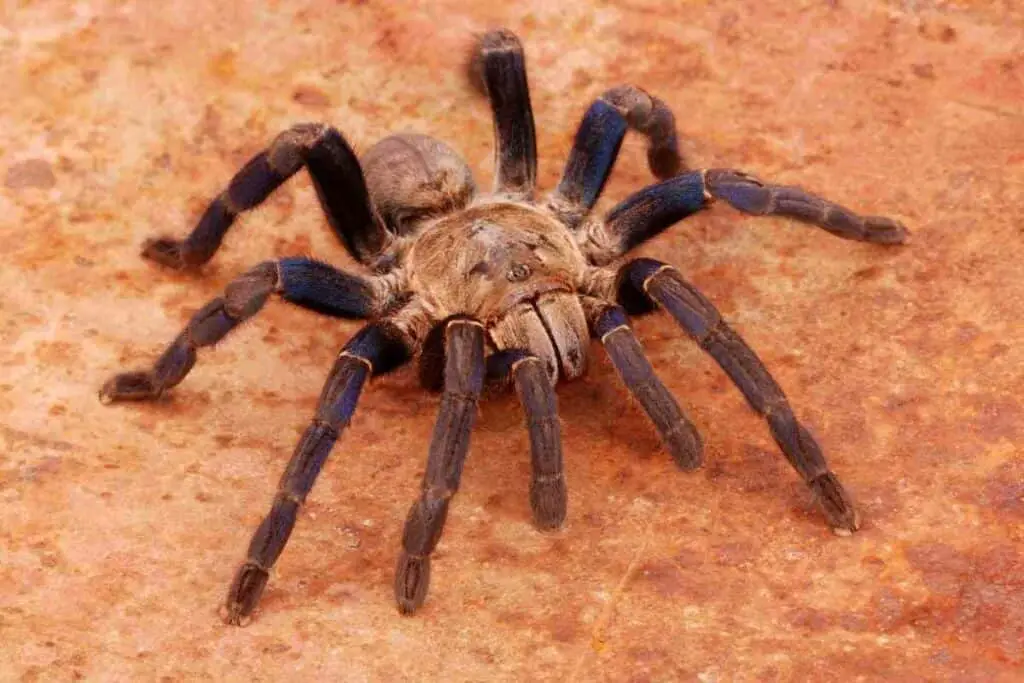
Cyriopagopus lividus or Haplopelma lividum care may be difficult for some people, but with the right information, it can be a fun, low-maintenance pet.
Cobalt Blue Tarantula Care
As with all tarantulas, cobalt blue tarantulas require special care.
They are delicate creatures that can easily be injured or killed if not handled properly.
First and Foremost: It is important to remember that tarantulas are wild animals. They should not be handled unless absolutely necessary. If you must handle your cobalt blue tarantula, be sure to do so gently and carefully.
Cobalt Blue Tarantula Behavior & Temperament
The Cobalt Blue Tarantula is a very docile and easy to care for spider.
They are also one of the most beautiful tarantulas, with their vibrant blue coloration. Although they are not aggressive, they will bite if they feel threatened. Their venom is not harmful to humans but can be painful.

Cobalt Blue Tarantulas are native to the tropical rainforests of Southeast Asia.
They are tree-dwelling spiders and spend most of their time in the trees. They build webs in the trees to catch their prey.
Cobalt Blue Tarantulas are nocturnal hunters and will come down from the trees at night to hunt for food.
Cobalt Blue Tarantulas are not social spiders and live alone.
They are not territorial and will not attack other spiders. However, they will sometimes eat other spiders if they are small enough.
Cobalt Blue Tarantula Diet
As with most tarantulas, the Cobalt Blue Tarantula is a carnivore.
Their diet consists mainly of insects such as crickets, cockroaches, and mealworms.
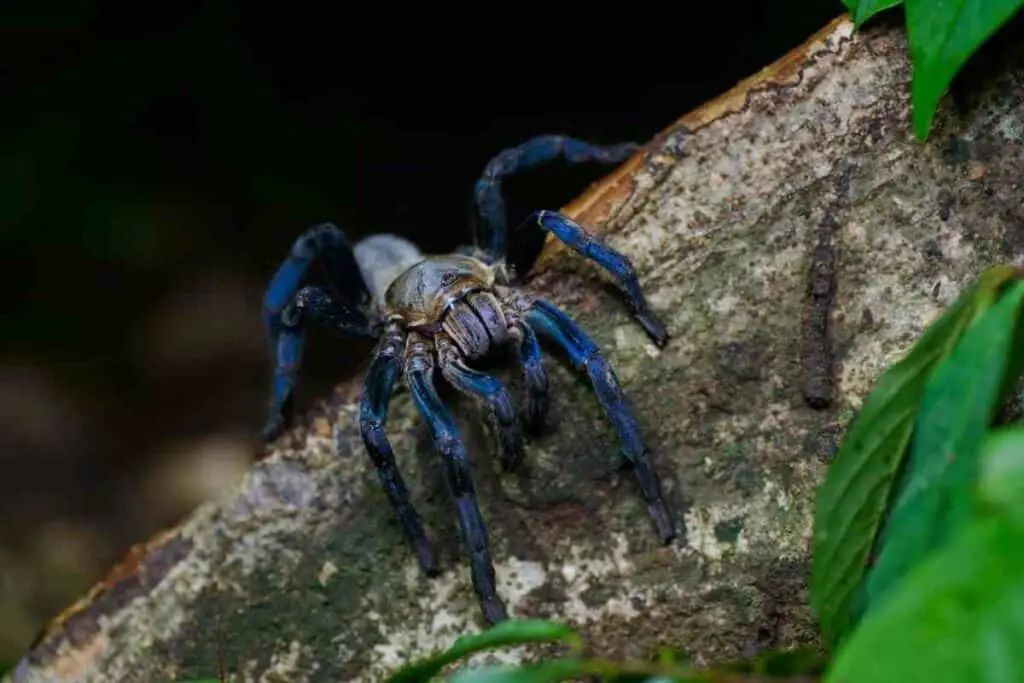
They will also eat other small animals like:
It’s important to provide your Cobalt Blue Tarantula with a varied diet to ensure that it receives all the nutrients it needs.
You can buy live insects from a pet store, or you can catch them yourself by setting up a cricket trap.
It’s also important to keep your Cobalt Blue Tarantula’s enclosure clean and free of debris, as this will help keep the insects healthy.
Change the water and food regularly, and remove any uneaten food to prevent it from rotting.
Cobalt Blue Tarantula Housing
As you can see, Cobalt blue tarantulas need a fairly large enclosure. A 20-gallon tank is the minimum size you should consider for an adult cobalt blue tarantula.
If you’re keeping a juvenile or spiderling, you can get away with a smaller enclosure, but be sure to upgrade to a larger one as your tarantula grows.
When it comes to the substrate, you have a few options.
You can use coco fiber, peat moss, or a mix of the two:
- Be sure to avoid substrates that are too sandy, as this can irritate your tarantula’s eyes and cause respiratory problems. A depth of about two inches should be plenty.
- You’ll also need to provide some cover for your tarantula. This can be done with cork bark, artificial plants, or a combination of the two.
Make sure whatever you choose is safe for your tarantula to climb on and won’t fall over if your spider decides to explore its surroundings.
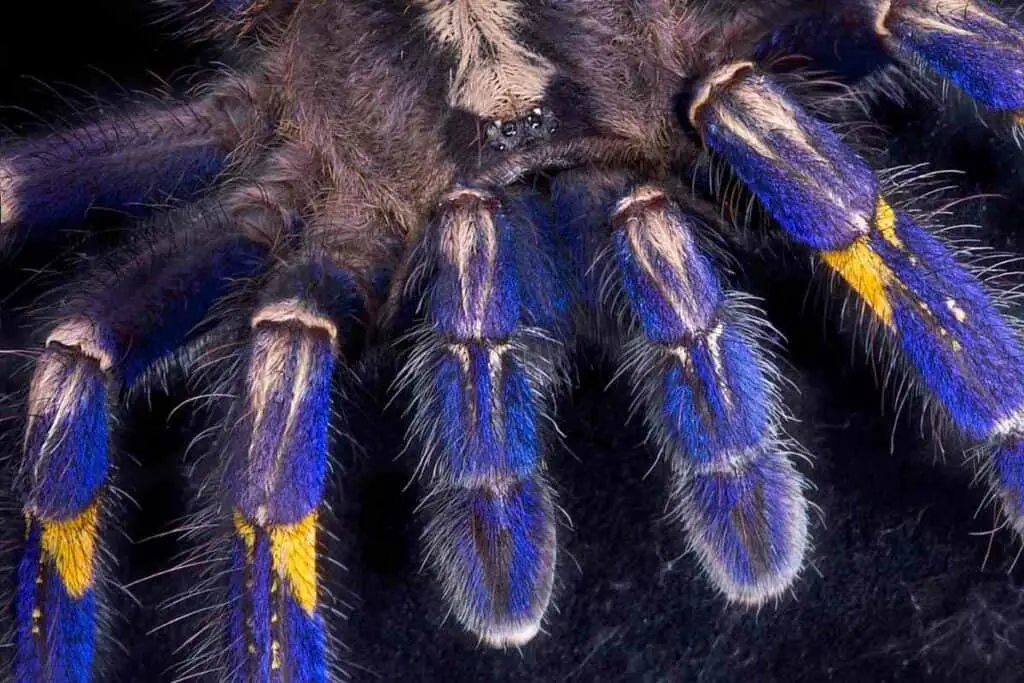
It’s crucial to provide your tarantula with a temperature range of between 78 and 84 degrees Fahrenheit, as well as a humidity level of 70 to 80 percent. Bi-weekly moistening the substrate may assist you to achieve these goals.
If you need to add warmth, a heat mat on the side of the enclosure will do the job, but be sure to keep an eye on the temperature so it doesn’t get too hot.
One thing to keep in mind when setting up your cobalt blue tarantula’s enclosure is that they like to climb.
Make sure you provide plenty of climbing surfaces, such as:
- cork bark
- artificial plants
- or a chunk of driftwood
Finally, be sure to provide a water dish for your tarantula.
This can be a shallow bowl or jar lid filled with fresh water. Your tarantula will use this to drink and soak in from time to time. Just be sure to empty and clean the dish every week or so.
Cobalt Blue Tarantula Life Span
In captivity, female Cobalt Blue Tarantulas can live up to 25 years old.
The males have a shorter life span of five to ten years.
In the Wild – They may live as long as 30 or 20 years, respectively. Staying hydrated in captivity is one of the most common health issues these arachnids face.
Another problem you may encounter is a bacterial proliferation in the substrate, which can cause illness.
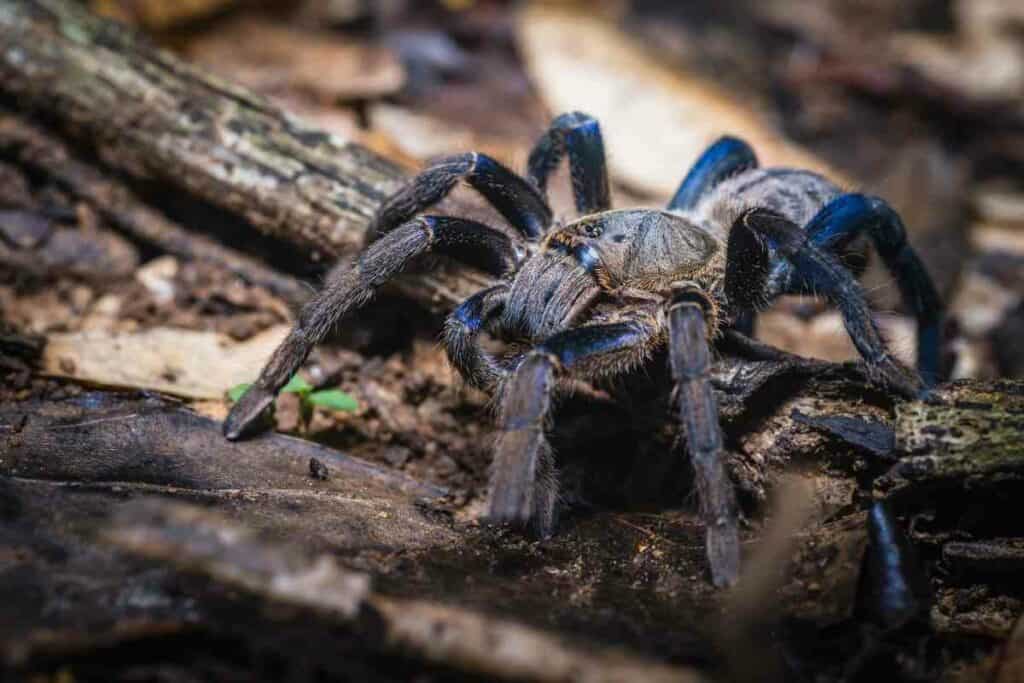
Bacteria can also build up in the substrate if food remains uneaten for too long. Parasites and mites are occasionally brought on by leftovers if they’re not disposed of immediately.
Aside from that, tarantulas don’t usually get sick or have many health problems.
One common ailment that Cobalt Blues sometimes suffer from is called “web rot.”
This happens when the spider’s web becomes infected with a fungus and starts to disintegrate. The tarantula will often abandon her web and build a new one, but if the problem persists she may eventually die.
Always Good Idea: You can help prevent web rot by keeping the enclosure clean and dry.
Cobalt Blue Tarantula Molting
The molting process is an important one for a tarantula. It allows them to grow, and can also help remove any parasites that may be present in their body.
Molting usually takes place in the privacy of the tarantula’s webbing.
During the molting process, the spider will first consume its old skin.
This provides them with the nutrients they need to grow. Once the skin has been consumed, the tarantula will begin to produce a new one.
The new skin is initially very soft and vulnerable. The tarantula will spend a lot of time in its webbing during this period until the new skin has hardened and darkened.
Molting is a very dangerous time for a tarantula. If something goes wrong, the spider can become stuck in its old skin, or even die.
For This Reason – It is important to keep an eye on your tarantula during molting and ensure that all goes well.
If you notice that your tarantula is molting, leave it in peace and give it plenty of time to complete the process.
Once the tarantula has emerged from its old skin, you can offer it a meal of insects or other small prey. This will help the spider to regain its strength and continue growing.
Cost To Setup And Care For A Cobalt Blue Tarantula
The cost of setting up and caring for a cobalt blue tarantula can vary depending on the size and age of the spider.
A baby or juvenile spider will need a smaller enclosure than an adult, and will also require more frequent feedings. Adult spiders can be fed less often but will need a larger enclosure.
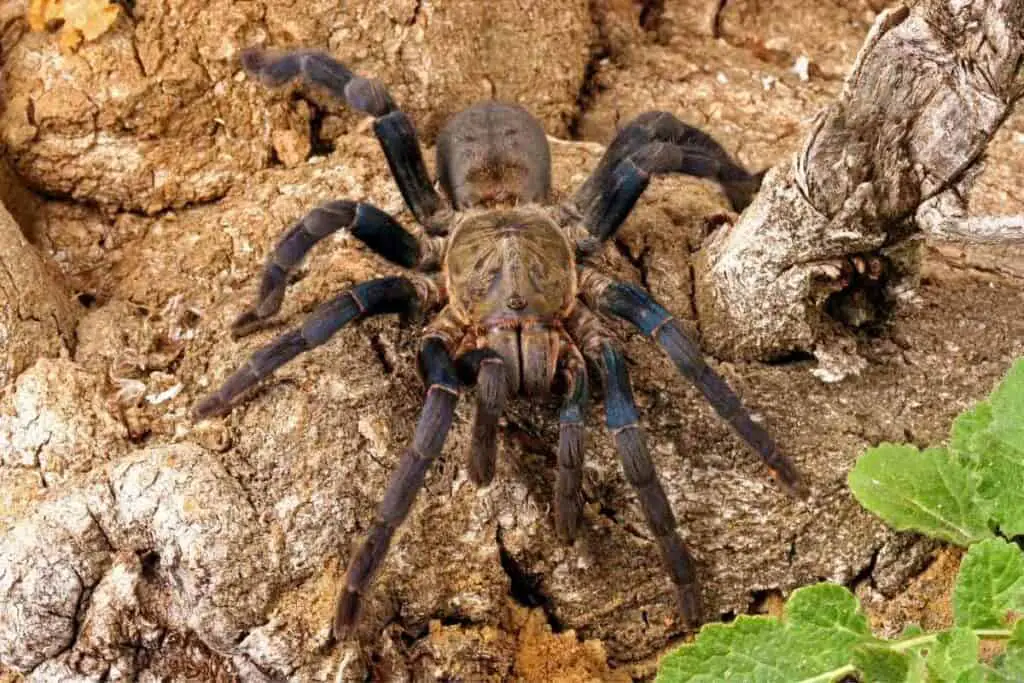
The cost of a basic enclosure, food, water dish, and bedding can range from $50 to $100.
Additional costs may be incurred if the spider needs a heater or humidifier to maintain the correct environment:
- 10 to 20 gallon terrarium/tank – $25 to $50
- Substrate/Dirt – $5 to $10
- Heat Lamp/Pad – $10 to $15
- Water Dish – $5
- Food – $5 to $10 per week
You’ll need about $135 for an initial investment, with around $40 every month for food and substrate.
Keep in mind that a heat lamp or pad will not be required. The cage’s temperature should range between 75°F and 85°F year-round.
If the temperature drops significantly during the winter, however, you’ll need to use a supplemental heating source to keep your tarantula warm.
The enclosure should be at least 20″ x 10″ x 12″, with a moist substrate such as vermiculite or potting soil.
You can provide some climbing branches and shelters, but cobalt blue tarantulas generally don’t require too much enrichment.
Cobalt Blue Tarantula Health and Safety
The Cobalt Blue Tarantula is a beautiful, but potentially dangerous, spider.
If you are considering keeping one as a pet, it is important to be aware of the potential risks involved.
Cobalt Blue Tarantulas can deliver a painful bite if they feel threatened. They also have barbed hairs on their bodies which can cause irritation if they come into contact with your skin.
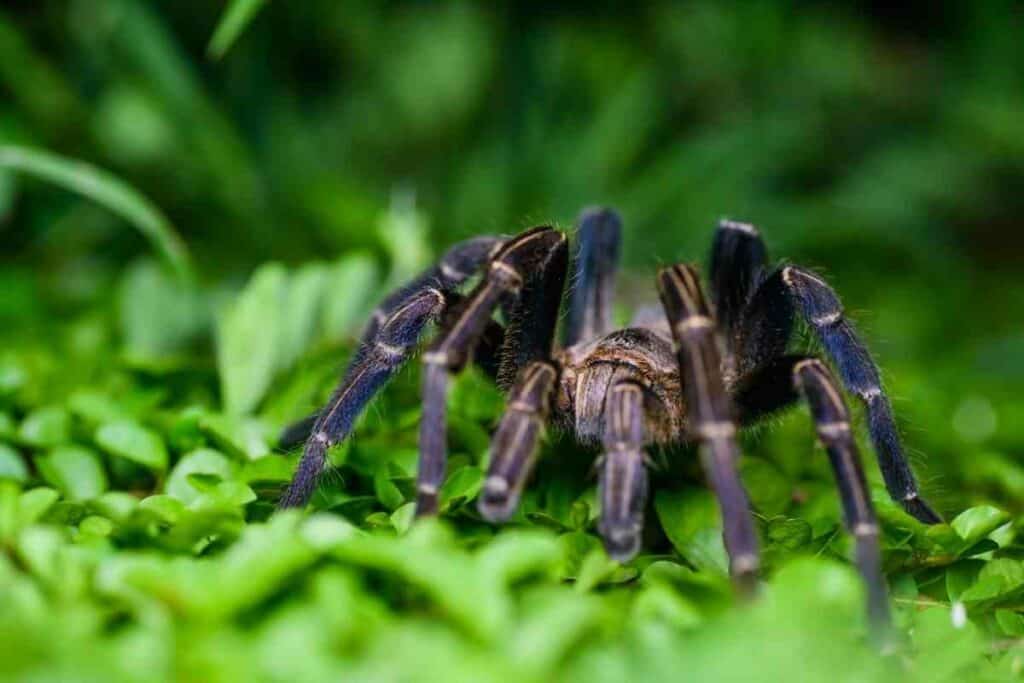
If you are allergic to spider venom, a bite from a Cobalt Blue Tarantula could be potentially fatal.
Before handling your Cobalt Blue Tarantula, it is important to wash your hands thoroughly and remove any jewelry that could catch on the spider’s barbed hairs.
It is also advisable to wear long sleeves and pants to protect your skin.
When handling your Cobalt Blue Tarantula, be sure to support its body from underneath so that it cannot fall and injure itself. Never pick up a tarantula by the legs, as this can damage their joints.
Actin to Be Taken – If you are bitten by a Cobalt Blue Tarantula, seek medical attention immediately. The bite may be painful and cause swelling but is not usually fatal.
By taking some simple precautions, you can enjoy your Cobalt Blue Tarantula while keeping yourself safe.
With a little knowledge and care, you can have a wonderful pet that will bring you years of enjoyment.
Conclusion
The Cobalt Blue Tarantula is a docile spider that makes a good pet for beginner spider owners. They are relatively easy to care for and do not require a lot of maintenance.
Cobalt Blue Tarantulas are a beautiful pet to have. However, it’s important to realize that these aren’t the type of cuddly pets that you can handle regularly.
Those who are new to the hobby must educate themselves thoroughly before getting a tarantula. They must have the proper type and amount of substrate to build a proper burrow.
Furthermore, the tarantula’s environment must be kept humid while maintaining bacteria-free aquarium water. Every day, fresh, clean drinking water is required.

